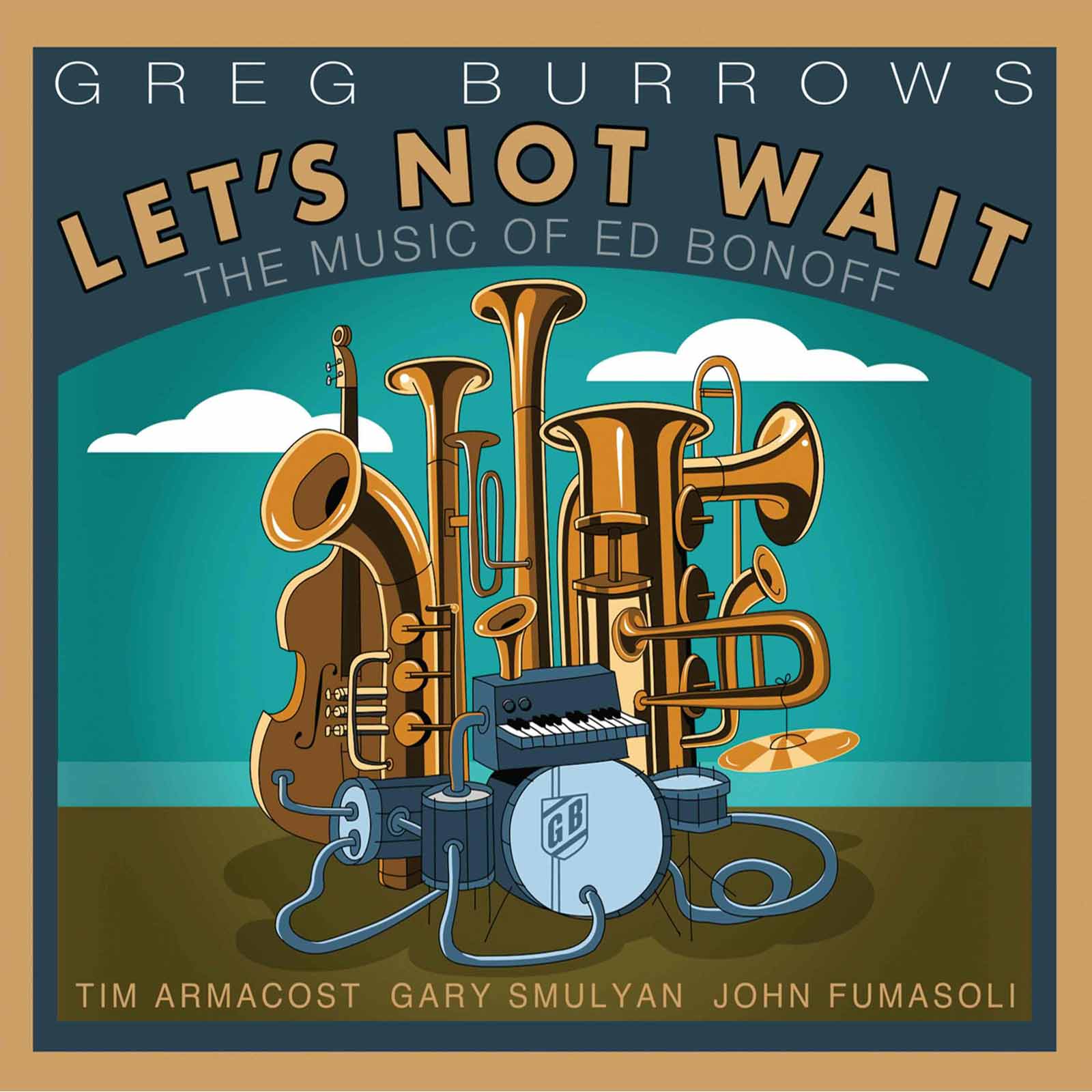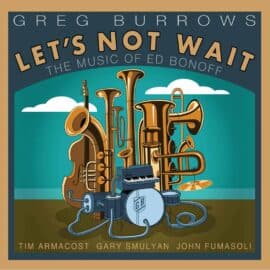| Jazz |

It has become a quiet trend in contemporary jazz: musicians turning their attention not to themselves, but to the composers who shaped their inner soundtracks. There’s both humility and curiosity in that gesture. For many performers, revisiting the work of another artist is an act of rediscovery, a way to reconnect with musical history while reinterpreting it through a modern lens. Clever arranging can breathe new life into forgotten pieces, allowing musicians to both honor and subtly reinvent the past.
Drummer and percussionist Greg Burrows has done exactly that with the music of Ed Bonoff. What he offers is not a simple tribute, but a conversation across time. Burrows approaches Bonoff’s compositions as a vast playground of rhythm and emotion, exploring their inner pulse without losing the quiet sophistication at their core. The challenge is formidable: to inhabit another artist’s musical world without tampering with its DNA. Yet Burrows succeeds, achieving a delicate balance between nostalgia and renewal, between the intimacy of memory and the thrill of rediscovery.
Ed Bonoff, now in his nineties, is not merely a figure from the past. In 2025, he continues to compose, arrange, and perform, holding court each week as drummer for the Creole Cookin’ Jazz Band at Arthur’s Tavern, a beloved fixture in Manhattan’s West Village. His presence there is almost mythic, a living link to a vanished era of New York jazz. Long before Arthur’s, Bonoff was a regular at the original Birdland, listening to Charlie Parker, Dizzy Gillespie, and Bud Powell from the edge of the stage. By the late 1960s, after decades as a working drummer, he turned to jazz compositionstudying with rigor and persistence, and developing a voice both lyrical and unpretentious. He has kept that curiosity alive ever since.
The connection between Burrows and Bonoff runs deep. Friends, collaborators, and kindred spirits, they share a devotion to rhythm as a form of storytelling. Burrows, who has long admired Bonoff’s little-recorded catalog, recognized that many of the older musician’s works had never been properly documented. With Bonoff’s blessing, he decided to change that. In early 2024, Burrows assembled an ensemble of some of New York’s most gifted jazz players, all eager to join a project that combined historical reverence with creative freedom. The rehearsals were intense but joyous, the sessions as much about discovery as about precision.
Listening to these new recordings, what stands out is the restraint. Bonoff’s pieces are not built around drum solos or rhythmic showmanship. Instead, they unfold like conversations—music rooted in balance, where brass lines and melodic phrasing carry the emotional weight. Burrows understands that architecture instinctively. He allows each solo to appear and dissolve naturally, never forcing momentum, but letting the music breathe, shimmer, and fade.
That sensitivity is no accident. Burrows is an explorer of sound in the truest sense, a musician as fascinated by tone and texture as by tempo. In an essay for Modern Drummer, he once reflected on his education: “I studied with the great Joe Morello (whom we sadly lost recently), Henry Adler, Gary Chester, and Bob Moses on drums; Montego Joe and, briefly, the legendary Milton Cardona for Latin percussion; and many other teachers. Currently, I’m focusing on mastering the incredible Korg Wavedrum drum synthesizer and exploring traditional percussion, like playing spoons and bones, as heard in the soundtrack I recorded for a national TV commercial in April 2011 for Gerber Yogurt Blends.” -That full reflection can be found [here]
His curiosity for unconventional sound sources, analog and digital, ancient and futuristic, translates into an approach to jazz that feels at once classic and experimental. He treats Bonoff’s writing not as relics to be preserved, but as living organisms, capable of adapting to new surroundings. The result is music that feels both familiar and surprising, like a photograph that has been restored not to its original colors, but to the emotions it once carried.
What makes this collaboration remarkable is its lack of irony. In an age when so much revivalist jazz is filtered through postmodern detachment, Burrows and Bonoff offer something far simpler, and far rarer: sincerity. There’s joy in the playing, but also reverence. You can sense the deep respect between generations, the warmth of friendship translated into sound.
Ultimately, this is music made for pleasure, and nothing else, a work that doesn’t chase trends or grand statements, but celebrates the enduring conversation between two drummers, two eras, and two visions of what jazz can still mean. It reminds us that sometimes, looking back is the most forward-thinking gesture of all.
In the end, Burrows’s/ Bonoff Project feels like an album made with both intellect and heart. The production has a vintage warmth, rounded mids, brushed cymbals floating just above the mix, a rhythm section that breathes like an old Blue Note quartet, but the phrasing and sound design are distinctly modern. It’s not a museum piece; it’s a conversation between decades.
The ensemble cohesion is outstanding, particularly in the horn section, which navigates Bonoff’s intricate voicings with understated grace. Burrows’s drumming remains conversational, precise, and empathetic, never loud, always listening. One might wish for a few more moments of risk, a passage or two where Burrows lets go completely, but that restraint is also the project’s aesthetic statement: this is about interplay, not ego.
The result is a quietly luminous record, full of small revelations. It rewards repeat listening, its pleasures unfolding like late-night dialogue in a dimly lit club. If there’s justice in the jazz world, this album will not only revive interest in Ed Bonoff’s compositions but also remind listeners that Greg Burrows stands among the most thoughtful drummers, and musical storytellers, of his generation.
Thierry De Clemensat
Member at Jazz Journalists Association
USA correspondent for Paris-Move and ABS magazine
Editor in chief – Bayou Blue Radio, Bayou Blue News
PARIS-MOVE, October 22nd 2025
Follow PARIS-MOVE on X
::::::::::::::::::::::::
Musicians :
Greg Burrows – Batterie et percussions
Tim Armacost – Saxophones ténor et soprano
Gary Smulyan – Saxophone baryton
John Fumasoli – Trombone
Al Orlo – Guitare (4)
Hiroshi Yamazaki – Piano
Rich Zurkowski – Contrebasse
Track Listing :
- Piazza Navona
2. Meatloaf and Margaux
3. It Just Gets Better
4. Shout ’Em, Aunt Tillie (Duke Ellington)
5. Spruce Alley
6. Let’s Not Wait
7. Ellington/Strayhorn Medley (Duke Ellington/Billy Strayhorn)
8. Le Corbeau de Chavignol
9. Acadian Nights
10. Mitosis

